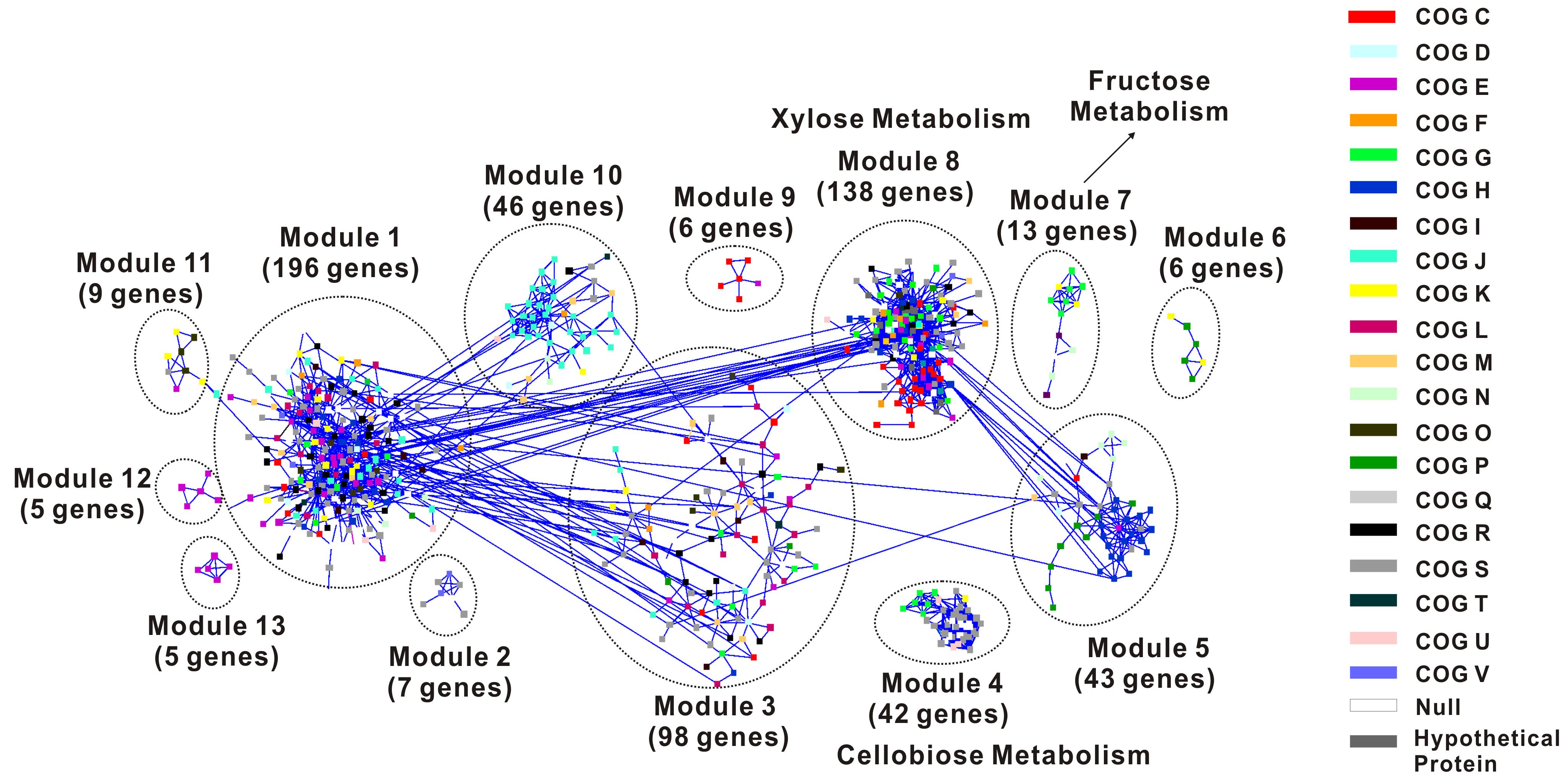Novel Strategy in thermophilic fermentation of ethanol revealed by QIBEBT
The ability to simultaneously utilize pentose and hexose has been a crucial goal in the production of cellulosic biofuels. On October 13th, PLoS Genetics online published a research article “The thermoanaerobacter glycobiome reveals mechanisms of pentose and hexose co-utilization in bacteria” by Functional Genomics Group, Qingdao Institute of Bioenergy and Bioprocess Technology (QIBEBT), Chinese Academy of Sciences (CAS). It reveals the mechanism of co-utilization of pentose and hexose and provides novel strategies for thermophilic fermentation of lignocellulosic bioethanol.
Pentoses and hexoses are both main ingredients of lignocellulosic biomass. Most industrial microbes either are unable to ferment pentose, or prefer hexoses over pentoses. The CAS-QIBEBT group led by Dr. XU Jian has reconstructed the first genome-wide carbon utilization network of thermoanaerobes, via functional genomics and systems biology approaches (Figure 1).
This study reveals that glucose and xylose modules collaborate in that the former promotes the lattervia activating xylose transport and catabolism, while xylose delays cell lysis by sustaining coenzyme and ion metabolism. Ms. LIN Lu and Dr. SONG Houhui and their colleagues in this research team experimentally demonstrated that the distinct yet collaborative nature of glucose and xylose catabolism can be rationally exploited for product-yield enhancement via optimized timing and balanced loading of the carbon supply in a substrate-specific manner.
Thermophilic gram-positive anaerobes such as Clostridium and Thermoanaerobacter are of exceptional interest in cellulosic-biofuel production, due to thermphilic growth (60-70 ℃), ability to ferment a wide range of carbohydrates and co-utilization of hexose and pentose. This study is an example of rational development of fermentation strategies via systems biology approaches. Furthermore, it forms the foundation for rational engineering of both fermentation and cellular machineries in these and other ethanologens (e.g. Saccharomyces cerevisiae, Escherichia coli and Clostridium thermocellum) for efficient pentose utilization. Furthermore, the work provides copious blueprints for synthetic biology parts and modules that operate at extreme environments. This work was supported by the CAS, Ministry of Science and Technology of China (MoST) and National Natural Scientific Foundation of China (NNSF).

Figure 1: Gene Co-expression Network of the Thermoanaerobacter Glycobiome(By Prof. XU Jian Group).
Paper link: http://www.plosgenetics.org/doi/pgen.1002318
Contact:
Prof., Dr. XU Jian, xujian@qibebt.ac.cn